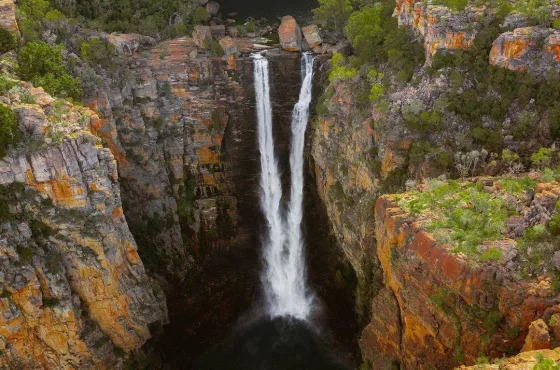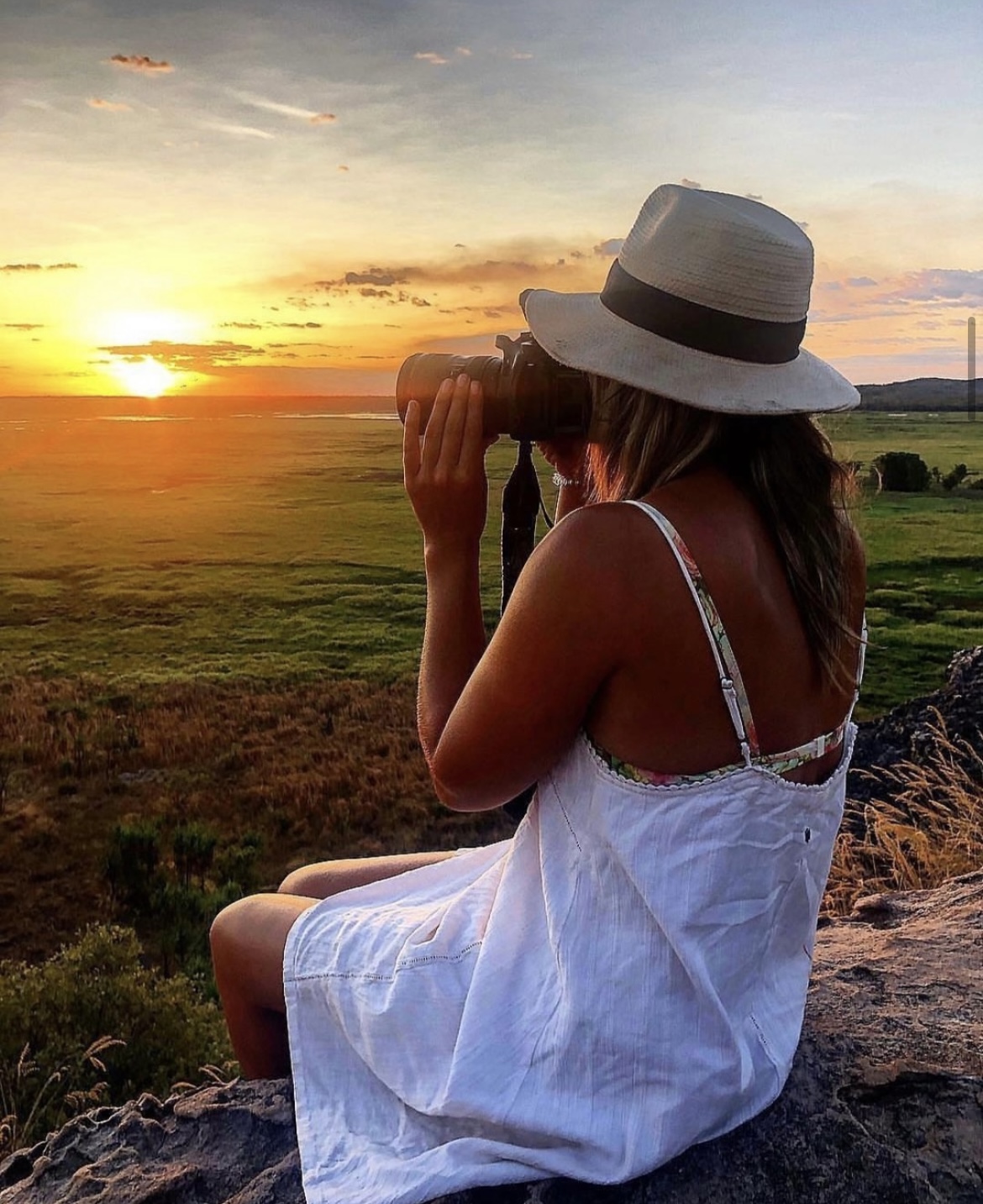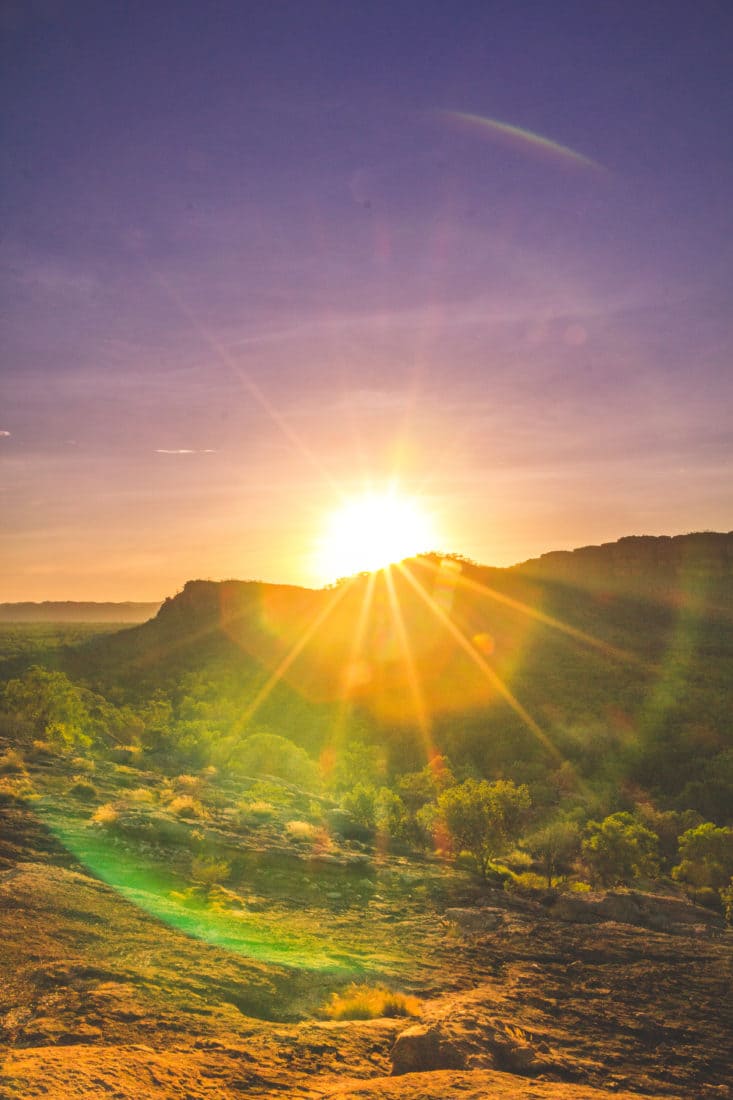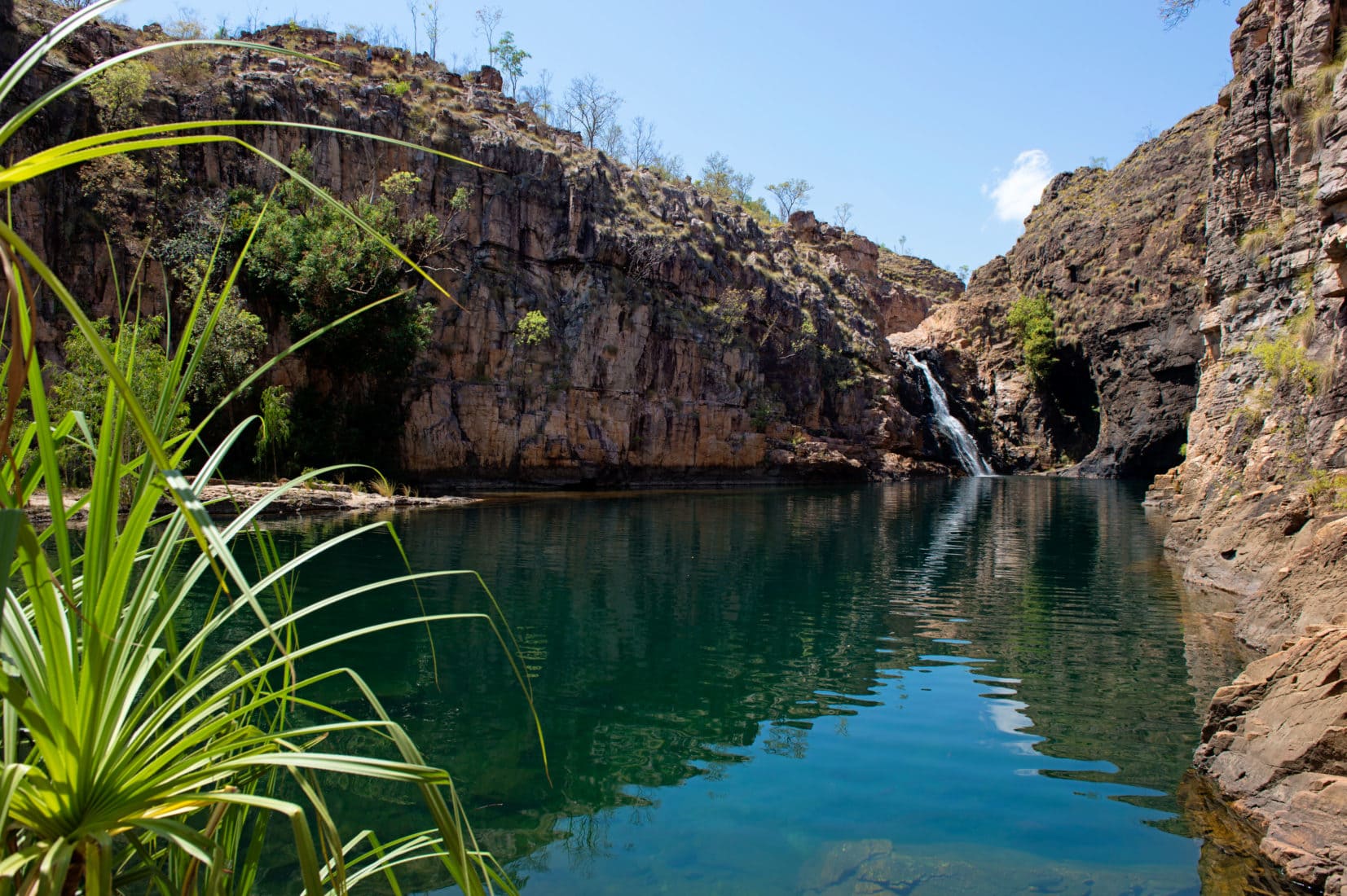
Top 10 Places to Photograph in Kakadu
Kakadu is loved by photographers for the diversity of landscapes, abundance of wildlife, the 20,000 year old rock art and of course, its people. Whether you’re a professional photographer or a leisurely holiday snapper, Kakadu gives you plenty of breathtaking opportunities to capture stunning moments during your visit to the spectacular Kakadu National Park.
As hard as it was, we’ve put together our list of the top 10 places to photograph in Kakadu. This list could be much longer however we’ve kept it to 10 of the best spots based on ease of access and ability to capture for most of the year regardless of the season.

image credit: @the_thong_and_jandal [IG]
Here's our Top 10 places to photograph in Kakadu:
1. Yellow Water Billabong
Brimming with native flora and fauna, Yellow Water Billabong is home to at least 60 different bird species, hungry crocodiles who feed on the plumb barramundi, wild brumbies and large buffalo who regularly gather on the waters edge.
A favourite for any photographer who visits Kadadu is to take the sunrise or the sunset cruise with Yellow Water Cruises and see the Billabong come to life as the day dawns or as the day starts to cool down and the sun sets over the Billabong.
2. Jim Jim Falls and Twin Falls
Absolutely magnificent whether experienced by land or air, the sheer size of Jim Jim Falls captivates all that see these towering escarpments and thundering waterfalls. Having graced many calendars, books and television program's, the Jim Jim region is a must see for all visitors to Kakadu National Park.
During the dry season (Apr-Oct), you can enjoy a hike over boulders to the base of the falls taking in the peace and serenity of the remarkable landscape along the way, then reward yourself with a well-deserved dip in the deep pool.
Visit during the Tropical Summer (Nov-Mar) when heavy rains send huge volumes of water crashing into the gorge below and you can take to the skies with Kakadu Air to see the falls in their full glory. Guaranteed a window seat, have your camera on the ready as you’re looped around the falls on both sides of the aircraft giving you ample opportunity to capture this spectacular scenery.
3. Ubirr
One of the main rock art sites within Kakadu, Ubirr not only provides a telling backdrop of life some 20,000 years ago, photography enthusiasts to Ubirr can also enjoy one of the most stunning sunsets you’ll ever see. After strolling through the 1km circuit (allow 45 minutes), add an extra 30 minutes to make your way to Nadab lookout to experience and capture the Ubirr sunset over the almost fluorescent green floodplains.
When visiting the Kakadu National Park rock art sites, we ask that you be respectful of the rock art and adhere to signs that advise not to touch the paintings or interfere with the silicon drip lines, keep to the walking tracks, and stay behind the fences and barriers where required. You can find out more here
4. Nourlangie Rock

Nourlangie (Burrungkuy) is another incredible rock art site and is one of the reasons why Kakadu National Park is dual-listed as a UNESCO World Heritage listed National Park. Here you can expect to experience an outdoor cultural museum as you make your way around the 1.5km circuit. Take in the many stories of the way of life over literally thousands of years as you wander through Anbangbang gallery and shelter before arriving at Kunwarddewardde lookout. Be ready to capture the impressive and rugged Arnhem Land escarpment with its sandstone cliffs and savanna woodlands.
The walk to the main gallery is open all year round and is wheelchair accessible.
5. Moline Rockhole
Also known as Igoymarrwa, Moline Rockhole is one of the less known and visited water holes in all of Kakadu. Only a select number of tour guides are allowed to access this pristine and raw swimming spot keeping visitor numbers to a minimum by only allowing one group at a time to enjoy the spot. The perfect place to relax and soak up nature at her best, and you might just be lucky enough to be the only one there making for perfect #selfie.
Recommend 4WD to access Moline Rockhole.
6. Anbangbang Billabong
If visiting Kakadu during the Dry Season, combine the Anbangbang Billabong walk with your visit to Nourlangie as they are located near each other. It is an easy 2.5km walk that will take around 1 hour where you will follow the yellow-tipped posts around Anbangbang Billabong to see lilies, waterbirds and stunning views of Burrunggui (Nourlangie Rock).
7. Mamukala Wetlands
Be ready to see an astonishing variety of bird life as you make your way along the Mamukala Wetlands walk. Set amongst the paperbarks, the observation platform is an easy and flat walk, and once there you can expect to capture up close shots without worrying that you’ll disturb your subject.
You’re likely to see Kingfishers, Magpie Geese, comb-crested Jacana’s and many more species. Mamukala Wetlands is a great spot to just relax and enjoy the abundance of nature surrounding you.
8. Maguk

Maguk is a pristine natural waterfall and swimming hole set in an immense stone amphitheatre located in the southern end of Kakadu National Park. A short walk through the monsoon rainforest where you’re surrounded by lush vegetation and through a bouldered river section you will emerge to the breathtaking Maguk plunge pool.
For visitor safety, Maguk may close during the Tropical Summer Season if the waterways rise and crocs make their way to the area. Please check the Kakadu Access Report for the daily updates on the latest openings and closures within the Park.
9. Motor Car Falls
Accessible all year round, Motor Car Falls remains one of Kakadu’s hidden gems despite being heavily photographed and featured in travel magazines for its beauty. It is a 7.5km return circuit but the general consensus is that it’s worth the trek.
As you get closer you will hear the sound of water cascading over the rockface and plunging into the pool below. Swim across the clear waters of Motor Car Falls plunge pool for a refreshing sit under the spray of the waterfall. Be on the lookout for turtles & fish in the clear waters of the plunge pool and you may even spot a wallaroo as you make your way to and from the falls.
10. Warradjan Aboriginal Cultural Centre
The Warradjan Aboriginal Cultural Centre was developed by the Aboriginal traditional owners of Kakadu and shares the culture of Kakadu’s people where the land and its people have always been linked. Caring for the land and its wildlife is fundamental to Aboriginal people's culture.
The Warradjan Aboriginal Cultural Centre lies within the Murumburr clan estate where the Gun-djeihmi language is spoken. Through the displays and exhibits you can gain an understanding of the relationship Bininj/Mungguy have with their families and their land. Visitors can also take part in a class hosted by the Traditional Owners such as learning to weave giving photographers the unique chance to capture intimate moments with the First Nations people. You can find out more here.
Don’t forget to tag us during your visit to Kakadu for the chance to be featured on our Socials!
Hashtag #dokakadu




